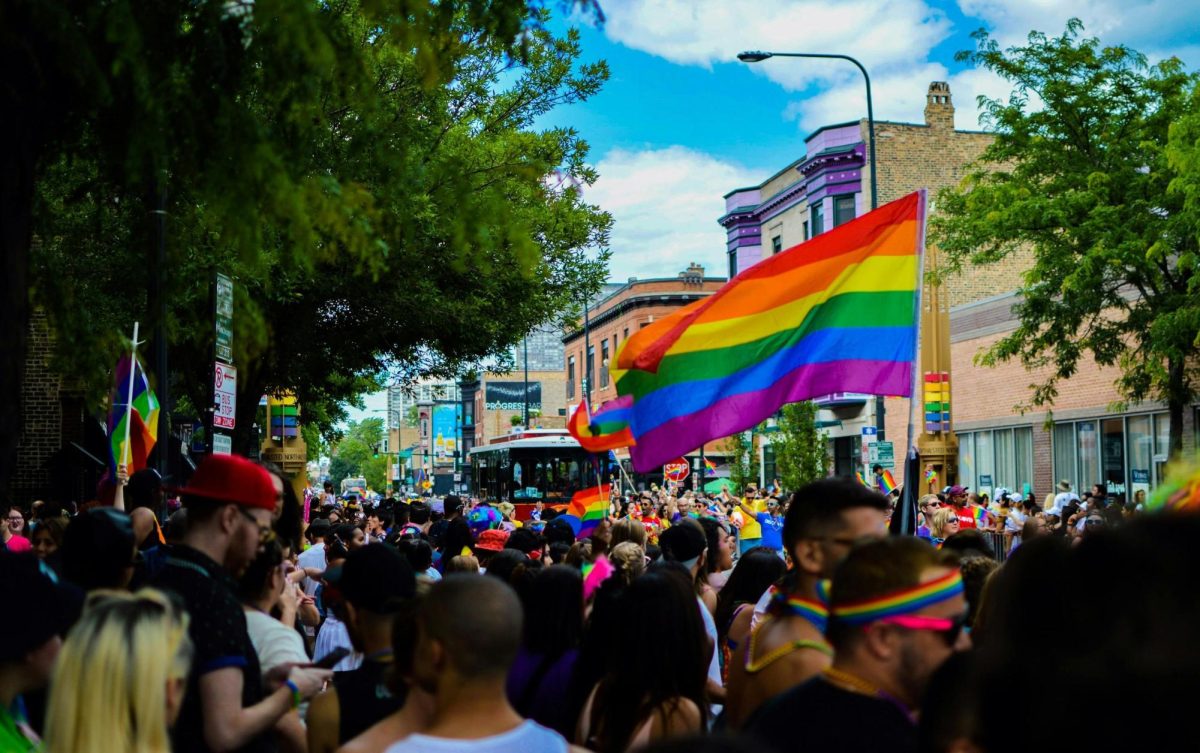Warning: This article discusses topics that may be difficult for some readers
Every year, four of Bellingham High School’s hallways are decorated for Homecoming. This year, however, the senior’s hallway—the main staircase—was defaced with antisemitic imagery.
Three of the plastic skeletons used as decor were altered. They had paper armbands with swastika symbols added to them, and one of them also had a headband. Principal Marty Atkins does not believe the deed was premeditated, but instead done “in-the-moment.”
School officials suspect that the act occurred after school on Monday, Oct. 2. However, many of the cameras had been covered by the hall decorations, so they couldn’t be sure exactly when it had happened.
On Tuesday, Oct. 3, Principal Atkins was alerted by a teacher of the imagery, and went personally to take it down. By that point, only one defaced skeleton remained. Atkins believes somebody else removed the other two before the administration was alerted, but cannot be sure who because of the covered cameras.
The situation with the cameras also led to school administration being unable to identify the perpetrators from footage. Atkins says he was “investigating from the third to the fifth [of October]” in an old-school style investigation until he finally identified the involved parties on Thursday, Oct. 5.
Immediately, the students involved were given consequences based on a new district policy and procedure, policy and procedure 3209: Bias Incident and Hate Speech. With assistance from the district, Principal Atkins chose from the most relevant educational activities and disciplinary actions as consequences for the students’ actions.
District Equity, Diversity, and Inclusion (EDI) manager, Dr. Janis Velasquez-Farmer, mentions that policy 3209 is primarily an educational policy, and so the district has to “combine [it with other policies] in order to create the best support for the school.”
Throughout this entire incident, the Bellingham School District has been doing their best to both educate the students who defaced the hall decor with hate symbols and support the community around them. Dr. Velasquez-Farmer says that “we can’t know who’s impacted and [we] can’t know why they’re impacted. Somebody doesn’t have to be Jewish to be impacted by [the swastika].”
“Hate symbols spread hate, and so there’s a fear, a lack of safety associated with them. We want to make sure that we are able to wrap the supports around all of our students and staff and families as soon as possible,” she says.
One of the ways that the school district does this is by letting the community know that they have resources available to them. Those resources can be policies like policy 3209 that protect against hate speech. They can also be the availability of counselors or even the anonymous tip line.
Another way that the school district attempted to support the community through this incident was by acknowledging that it happened. On Friday, Oct. 6, Principal Atkins wrote a special newsletter dedicated to informing people of what happened. He notes that he didn’t include it in the regular one because “we didn’t want it to get buried in other things.”
Dr. Velasquez-Farmer says that one of the most important things to do when working towards preventing incidents like these from happening in the future is mindfulness.
That mindfulness can be speaking out when you see hate, and making sure that others know it isn’t okay. All students have influence, not just those who are typically thought of as leaders. Everyone is, in some way, able to “make sure that somebody’s messages aren’t getting past [them], or [to] focus on creating a more positive, welcoming environment.”
Another way this mindfulness can present is being aware of the types of media that we consume.
“Social media has such a powerful influence, because once you click on one thing all of a sudden your entire social media feed gets flooded with that thing. If you accidentally or intentionally click on a hate-filled thing all of a sudden your social media is full of hate-filled things,” says Dr. Velasquez-Farmer, “to know how much of an impact that has on our brains is really important.”
Repeated exposure to hatred can lead to desensitization, so intentionally limiting it can go a long way towards reducing hate-speech incidents.
“This is only one way that hate shows up—that in-your-face, the symbols right in front of you—that’s the blatant racism or antisemitism or hate. But there’s so many more ways that it shows up that feels undercover. You can fill a whole room with that undercover stuff and not realize that ‘hey, I’m contributing to this,'” states Dr. Velasquez-Farmer.
The district urges all members of the community to speak out when incidents like this one take place, in order to ensure a safer learning environment for everyone.
“I want the whole community to take action when there’s hateful things that are done,” says Principal Atkins.
What is antisemitism and why is the swastika significant?
Antisemitism is prejudice against Jewish people. At times, this hostility has become violent, with the most notable case in semi-recent history being WWII/the Holocaust. During the Holocaust, Germany was under the rule of a political party called the Nazis, who committed genocide against many groups of minorities, the largest of which was Jewish people. The swastika was a Nazi symbol, and represents antisemitism and other forms of bigotry.







